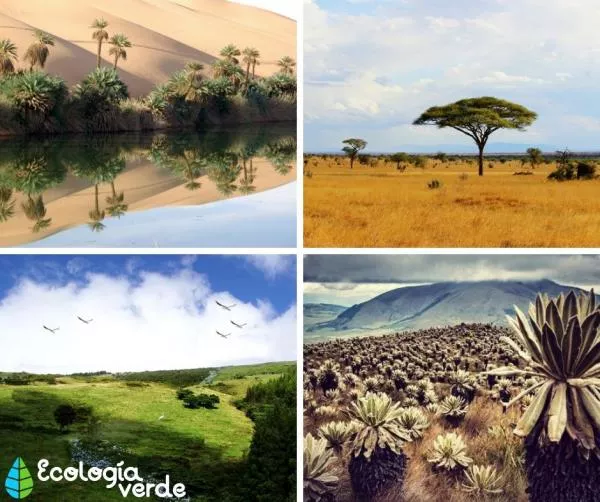
"Vegetation" is a word that we use very frequently but, on many occasions, without being fully aware of the specific meaning it implies. On a planet where much of the terrestrial territory is covered by plants of all kinds, and where the marine surface is also inhabited by aquatic plants, the variety of types of vegetation that can be found is enormous.
In this Green Ecologist article we are going to see the main types of vegetation existing, as well as the most important characteristics of each.
What is vegetation
We understand vegetation as covered with flora that grows on a ground concrete, it does not matter if by cultivation or spontaneously. Logically, the species and characteristics of this vary enormously depending on the climate and the terrain in which it is found. "Vegetation"It is a very general term, in fact, it is one of the broadest in both botany and geography and, within these sciences, refers to any kingdom taxon Plantae in a specific area or environment.
To learn more about it, we recommend you consult these other Green Ecologist articles in which we talk about the Plantae Kingdom: what it is, characteristics, classification and examples and about How vegetation influences the climate.
Types of vegetation according to the environment in which it is
One of the most basic classifications that can be made of vegetation is according to the physical environment in which we can find it. Part of two large groups: the vegetation in the aquatic environment and in the terrestrial environment.
Aquatic vegetation
Aquatic vegetation is that which we can find both submerged in aquatic environments, whether they are fresh or salt water, as well as that which is in areas of very high environmental humidity. It can be both totally submerged plants, as well as those that are only partially submerged, and it is the one that we find in areas such as swamps, lakes, wetlands, estuaries, rivers or in the sea itself.
Terrestrial vegetation
Terrestrial vegetation is that which grows on land, without being totally or partially submerged. Logically, the enormous variety of terrestrial environments means that there are a large number of subtypes of terrestrial vegetation such as, for example, the gypsophilous vegetation, which is the one that develops in clay-type soils, or the halophilic vegetation, which grows in environments with a high concentration of salt.

Types of vegetation according to the biome in which it is found
A much more specific classification is according to the biome or bioclimatic landscape in which we can find it. These are large areas that share characteristics of flora, fauna and climate, so the vegetation is within that first group. Let's see the most important:
Tundra vegetation
The tundra vegetation is simple in structure and low in height, adapted to withstand low temperatures and short hot seasons. They are plants without deep roots, with a predominance of shrubs, mosses and grasses.
Taiga vegetation
The taigas are mainly coniferous forests of little variety. The forests of this biome make up the largest forest mass on the planet, and give rise to very dense and dense formations that resist low temperatures well. There are also lots of lichens and mosses.
Jungle vegetation
The jungle, rainforest or jungle has a huge variety of vegetation. They are warm and very humid areas, which greatly favor the development and growth of plant life, which is why they are extraordinarily rich in it, which is divided into different very different strata.
Forest vegetation
There are many types of forests according to various classifications, but they all agree that they have large numbers of trees and a great diversity of both animal and plant life. There are deciduous and evergreen forests according to their foliage, but they can also be classified by climate or predominant vegetation.
Learn more with this other article about Forest Types.
Desert vegetation
Succulents reign in deserts, usually small in size and capable of withstanding long periods of drought thanks to their ability to store water. In addition, plants with thorns are also common, necessary to not be so easily predated.
We also recommend this other post about 25 desert plants.
Savanna vegetation
The savannah is mainly made up of grasslands of great extension and breadth, in which the trees are few or relatively far apart. Pastures of different types predominate, and there are a large number of shrubs. The vegetation tends to be deciduous.
Prairie vegetation
The meadows are rich in grasses, with grasses and plants such as clovers or sunflowers. The density of its vegetation varies depending on whether it is temperate or tropical grasslands.
Páramo vegetation
In the páramos, which are found at high altitudes, the vegetation has needed really drastic adaptations to survive its low temperatures and strong winds. They are shrubs with strong and hard leaves, capable of growing in arid soils that are resistant even to drought.


If you want to read more articles similar to Vegetation types, we recommend that you enter our Biology category.


